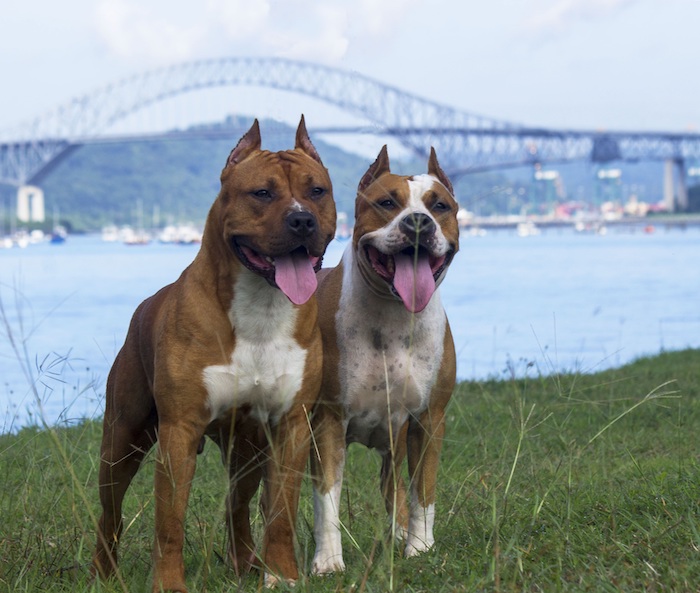
We love this paragraph from the American Staffordshire Terrier‘s Illustrated Study Guide: “Powerful, confident, alert, alive, vigorous. He is all male dog. It should be obvious at first glance that he is definitely masculine. You should never have to look for plumbing to tell. If he looks like a bitch, he is incorrect.”
The term for the physical differences between male and female dogs is “sexual dimorphism,” and several AKC breed standards mention it one way or the other. In the Russian Toy standard, “sexual dimorphism only slightly defined,” while in the Rottweiler standard, it is written that “dogs are characteristically more massive throughout with larger frame and heavier bone than bitches. Bitches are distinctly feminine, but without weakness of substance or structure. Sexual dimorphism may appear as a difference in coat. In the Belgian Tervuren, a female rarely has as long or as ornamented a coat as the male (the standard goes on to say that this disparity must not be a consideration when the female is judged against the male).
Is this difference true for all dog breeds?
Back in 1950, Bernard Rensch, a German evolutionary biologist and ornithologist, described something that came to be known as, ”Rensch’s Rule.” According to the rule, when a male is larger within a dog breed, the female is respectively smaller, and the difference is more prevalent in larger breeds while in the smaller breeds, there appears to be less variability.
Is this really true?
In 2012, a study investigating Sexual Size Dimorphism (SSD) looked at 6,221 individuals of 74 breeds ranging in height from less than 19 cm in Chihuahua to about 84 cm in Irish Wolfhound and concluded that most dog breeds are male-larger, but that SSD becomes smaller with decreasing body size. In fact, it found that the smallest breeds are nearly monomorphic, which is to say they are quite similar.
We circle back to the Am Staff in which either sex should give the impression of great strength for his or her size; a well put-together dog, muscular, agile and graceful. How this manifests in a bitch is subtle, but evident. While the muscle padding on the top skull planes of the forehead and muzzle sin a male may make the planes of the forehead and muzzle rise slightly, for example, this is a bit less so in a female. There is also height and weight differences (18 to 19 inches at shoulders for a male, 17 to 18 inches for a female being preferable. As the Illustrated Guide writes, “Although very powerful, she should appear totally feminine and athletic. It should be obvious at first glance that she is a bitch. If you have to check for plumbing, she is too doggy.”
Image photo by form PxHere
